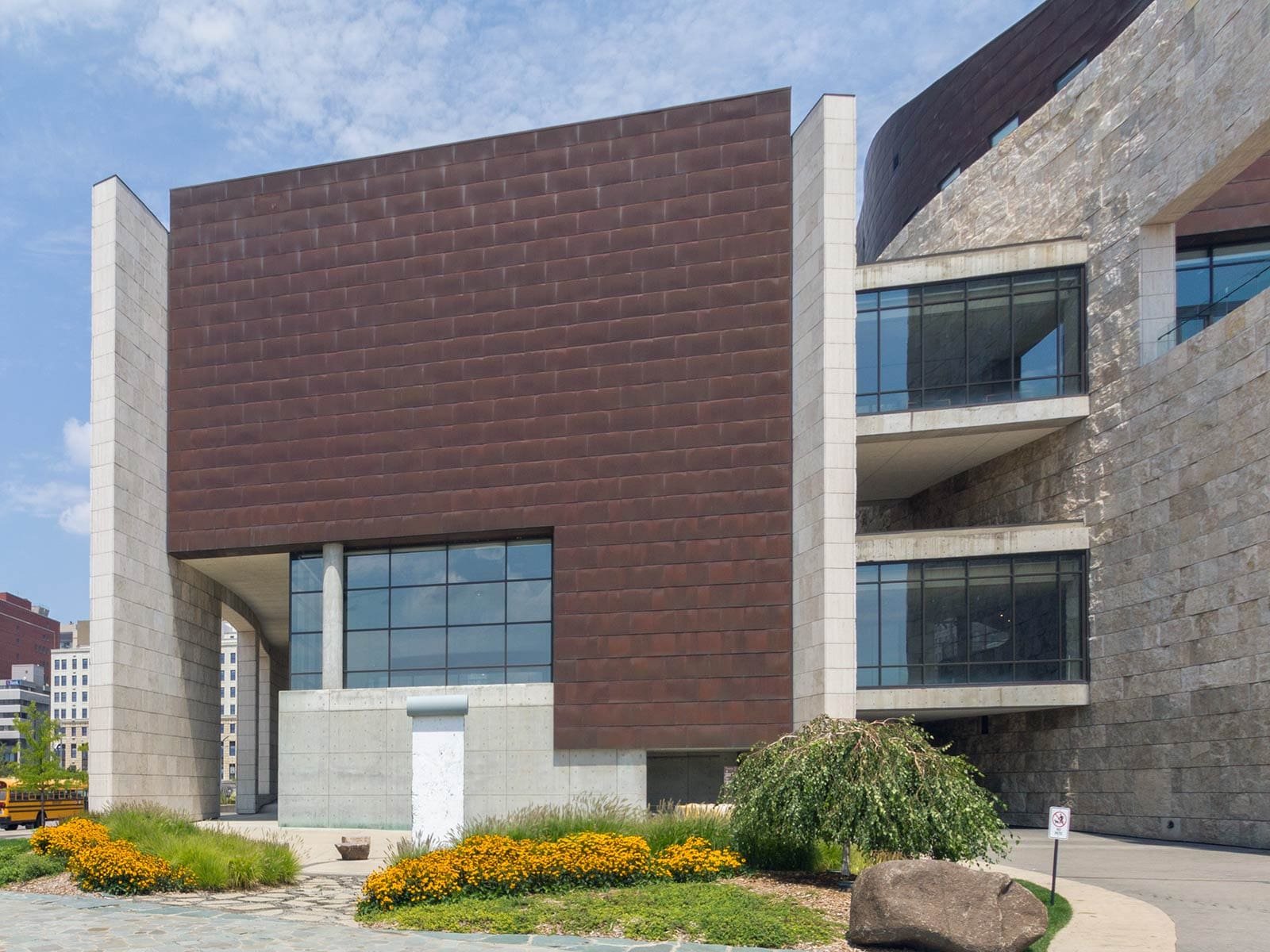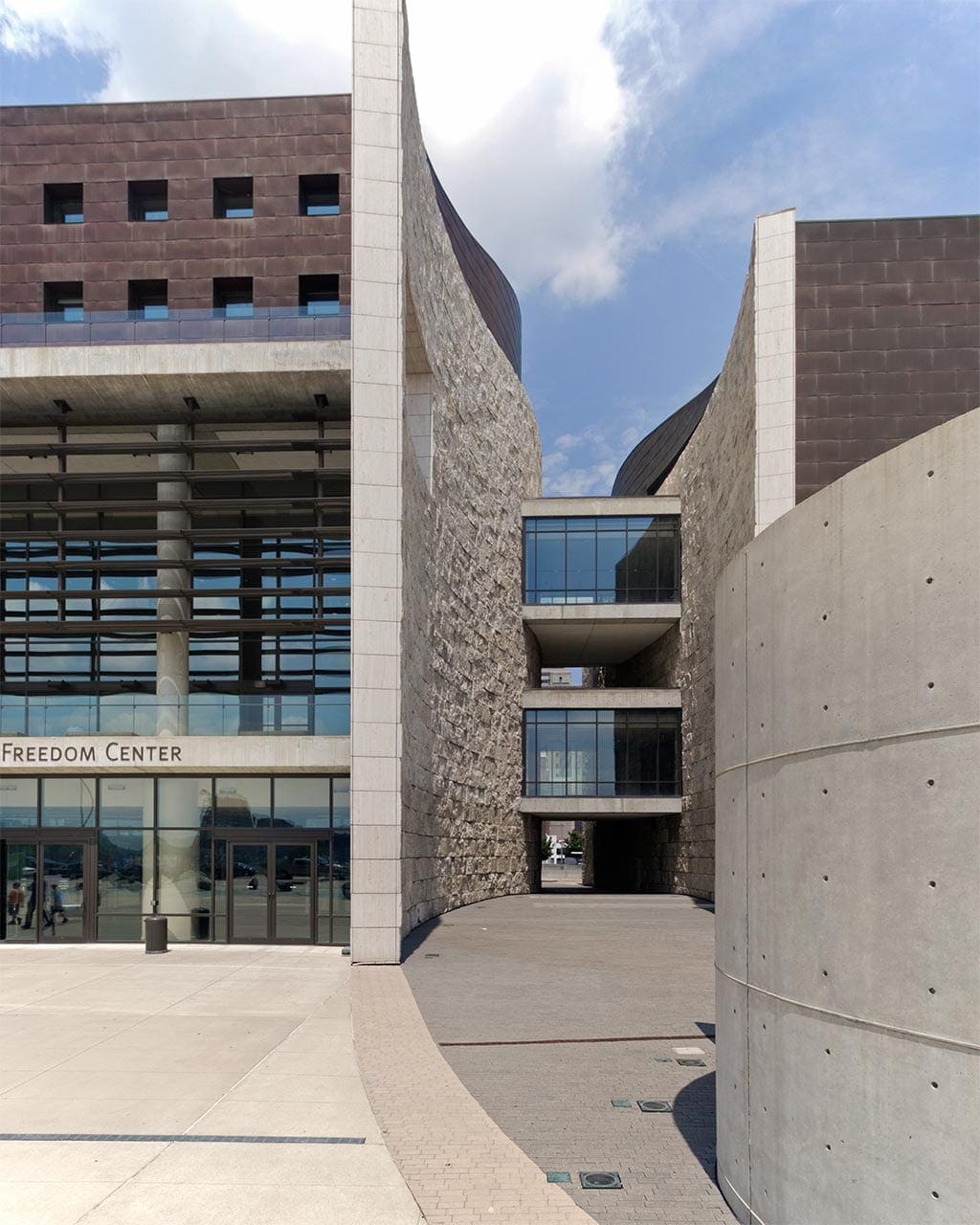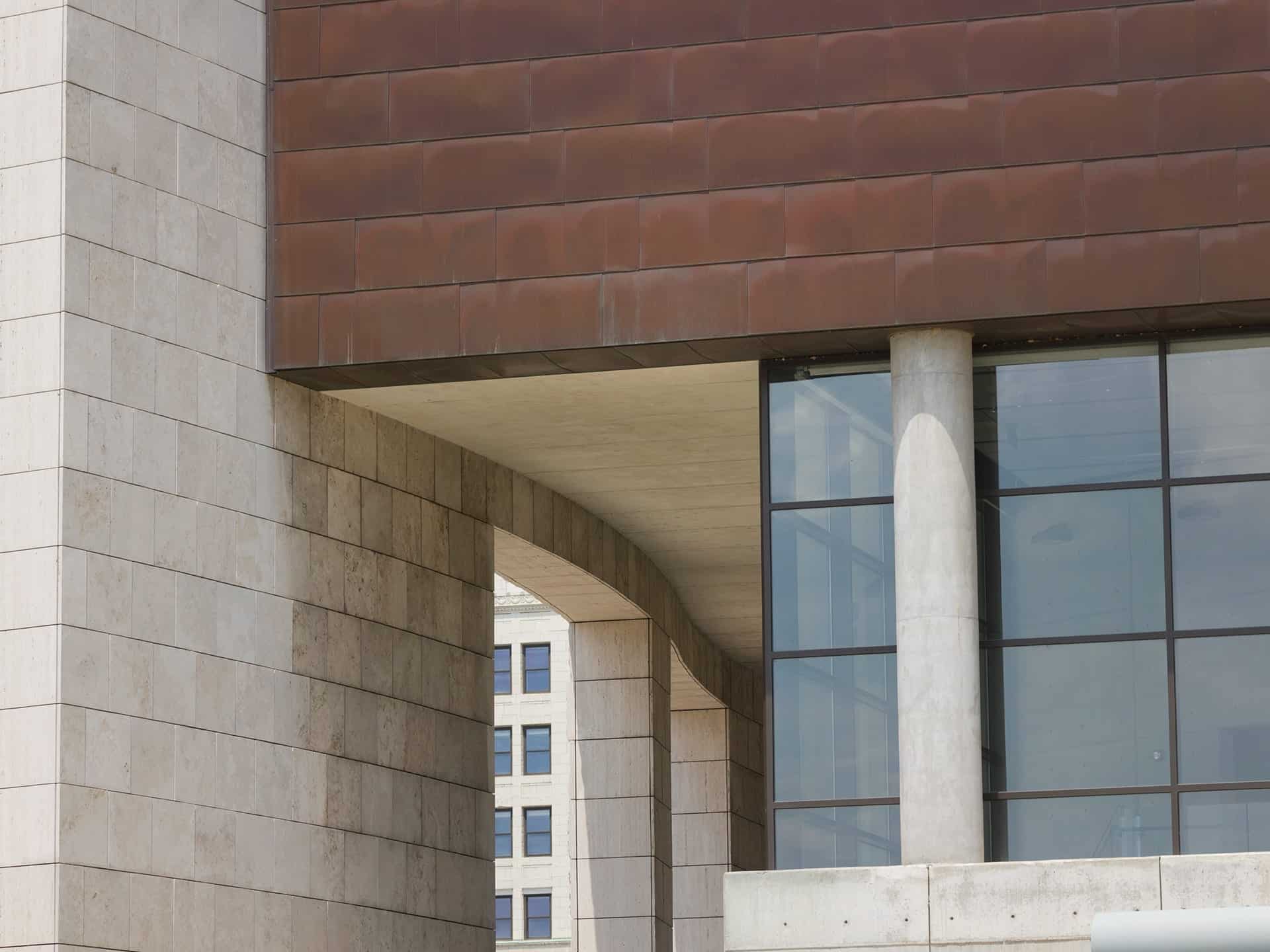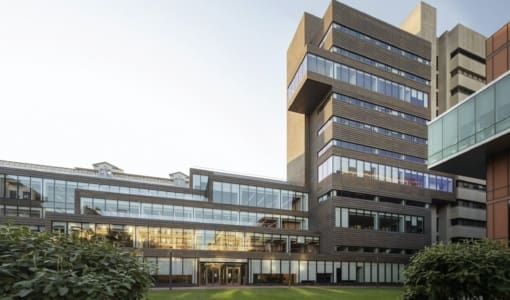Freedom Center
National Underground Railroad Freedom Center
A new copper and stone building rises in downtown Cincinnati, an icon in its own right in the midst of other grand architectural works such as Libeskind’s Ascent at Roebling’s Bridge and Zaha Hadid’s Rosenthal Center.
The Freedom Center features copper flat seam wall panels and associated flashings. The material was installed as raw copper panels and allowed to age naturally. This authentic process meant that the bright red copper quickly developed a dark reddish-brown patina, which will mature into its final form of light blues and greens. The museum is an affiliate of the Smithsonian Museum, which means that the Freedom Center has access to the immense stored collection of The Smithsonian.
The architectural team for the Freedom Center was designed by BORA with Blackburn Architects. Design of the new building began in 1998, broke ground in 2002, and was completed in 2004.

Photograph of the National Underground Railroad Freedom Center.
PHOTO © A. ZAHNER COMPANY.

Southern view of the National Underground Railroad Freedom Center.
PHOTO © A. ZAHNER COMPANY.

Upward view of the Freedom Center copper panels which have patinated to a dark red-brown.
PHOTO © A. ZAHNER COMPANY.

Detail of the National Underground Railroad Freedom Center.
PHOTO © A. ZAHNER COMPANY.

Photograph of the curving paths which cut through Freedom Center.
The location of the project is just north of the Ohio river, a significant location noted by Brian Libby in the Metropolis Mag:
‘When escaped slaves made their way north to freedom along the Underground Railroad, the Ohio River was a place to celebrate a bit before continuing on. Ohio law banned slavery, but superseding federal law allowed whites to re-capture slaves that had crossed the river and return them to Southern slave owners. As a result, most slaves using the Railroad continued further north.’
The notion of continuing on can be seen in the design of the building, as curving paths cut through the north/south axis of the building, further emphasizing the continued movement for freedom and social rights.

Copper panels will continue to weather at Freedom Center.
PHOTO © A. ZAHNER COMPANY.

installation of raw copper panels at Freedom Center.
PHOTO © A. ZAHNER COMPANY.
Resources and Press
“It takes courage to place a monument to racial harmony and diversity at the doorstep to your city. We had the nerve to do that.” — New York Times, Bruce Webber, August 01, 2004.
“One of my big concerns was that we’d be overshadowed by the stadiums,” says Freedom Center CEO Ed Rigaut. “But the museum really stands tall. I’ve even heard a few people comment that, in a way, we dwarf the stadiums.” — Metropolis Magazine, October 1, 2004.
”I see a museum not as a place that limits our vision, but one that enhances our vision. Museums have traditionally not taken a transformative role, but that’s changing. The Freedom Center, like our museum, can ask itself, ‘Why did we build this?’ Not just to look back, but to shape a different present and future.” — Cincinnati Enquirer, Krista Ramsey, August 1, 2004.
”It’s a learning center whose high-tech, interactive displays allow visitors to witness ongoing struggles for freedom worldwide.” — Town & Country, Annette Weisman, November, 2004.






 PHOTO ©️ Parrish Ruiz de Velasco (parrch.com)
PHOTO ©️ Parrish Ruiz de Velasco (parrch.com)



 © Fedora Hat Photography
© Fedora Hat Photography Photo by Andre Sigur | ARKO
Photo by Andre Sigur | ARKO





 Ɱ, Creative Commons Attribution-Share Alike 4.0 International license, edited.
Ɱ, Creative Commons Attribution-Share Alike 4.0 International license, edited.


